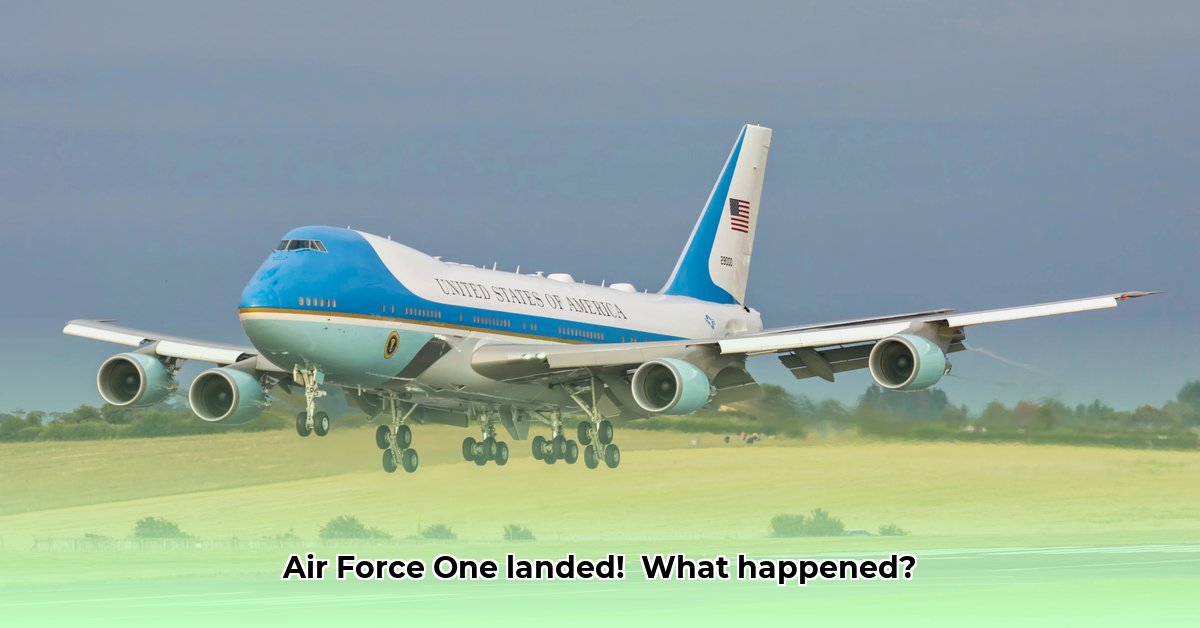
Schiphol's Presidential Welcome: A Security Deep Dive
Air Force One's arrival at Amsterdam's Schiphol Airport marked more than just a plane landing; it signified a complex, multi-layered security operation. President Biden's visit necessitated a comprehensive approach, encompassing air, ground, and cyber security, and meticulous logistical planning. This article delves into the intricate details of this operation, highlighting the challenges and successes involved.
How many layers of security are actually required to protect the President on foreign soil? The answer is far more than one might imagine. The President's safety involved a truly remarkable effort.
Keeping the President Safe: Multiple Layers of Security
Protecting the President involved a robust, multi-layered security strategy. Airspace restrictions ensured no unauthorised aircraft approached Air Force One. On the ground, a coordinated effort involving Dutch police, special forces, and intelligence agencies created a secure perimeter. Simultaneously, a sophisticated cybersecurity operation countered potential digital threats. While sites like Flightradar24 attempt to track flights, the intense security measures made real-time tracking exceptionally difficult, highlighting the effectiveness of the security protocols deployed.
The Logistics: A Smooth Operation Despite Challenges
Coordinating hundreds of personnel from various agencies to ensure a seamless operation presented a significant logistical challenge. This involved precise timing and careful planning to adapt Schiphol's normal operations. The potential consequences of delays or security breaches underscore the weight of responsibility on these logistics teams. The flawless execution, despite disruptions to regular airport operations, stands as a testament to Schiphol's capabilities and the teams involved. Did you know that over 1000 personnel were involved in the operation’s planning alone?
Air Force One: A Flying Fortress of Technology
Air Force One is far from a standard commercial aircraft; it's a technologically advanced flying command centre. This includes state-of-the-art communication systems, advanced medical facilities, and undisclosed security systems designed to mitigate various threats. With an aging fleet, the planned replacement presents a significant opportunity for modernisation and enhanced security, but also introduces the risk of unforeseen vulnerabilities.
Assessing the Risks: What Could Go Wrong, and How it was Prevented
A comprehensive risk assessment preceded President Biden's arrival. Potential threats, ranging from terrorist attacks and mechanical failures to cyberattacks and civil unrest, were carefully evaluated for both likelihood and potential impact. Mitigation strategies, detailed in the risk assessment matrix below, were implemented to lessen the impact of these threats. While risk mitigation strives for minimisation, complete elimination is practically impossible.
| Threat | Likelihood | Impact | Mitigation Strategy |
|---|---|---|---|
| Terrorist attack | Low | Catastrophic | Multiple layers of security; intelligence gathering; detailed emergency plans |
| Mechanical failure (Air Force One) | Low | High | Thorough maintenance; backup systems; contingency planning |
| Ground transport incident | Low | Medium | Secure transportation; well-planned routes; effective emergency response system |
| Civil unrest/protests | Low | Medium | Crowd control measures; clear communication; preemptive risk management |
| Cyberattack | Medium | High | Robust cybersecurity defence; real-time threat monitoring; incident response team |
Keeping Up with the Times: Adapting Regulations
The event underscores the need for continually updated aviation security regulations. Balancing effective security with individual privacy rights presents an ongoing challenge. The incident highlights the necessity for evolving regulations that keep pace with technological advancements. The success of this operation serves as a benchmark for the future development of security protocols.
Conclusion: Success and Ongoing Challenges
Air Force One's arrival at Schiphol demonstrated the efficacy of coordinated security measures and inter-agency cooperation. This success, however, only reinforces the understanding that aviation security is a constantly evolving field. Adaptive and continuous improvement remains crucial.
Enhancing Air Force One Security: A Proactive Approach
Key Takeaways:
- Improved inter-agency collaboration is paramount for successful high-profile visits.
- Integration of cutting-edge technology significantly increases security.
- Proactive risk assessment and mitigation are crucial for preventative security.
The successful landing of Air Force One highlights the importance of proactive security enhancements. Continuous improvement, driven by lessons learned and technological advancements, is vital.